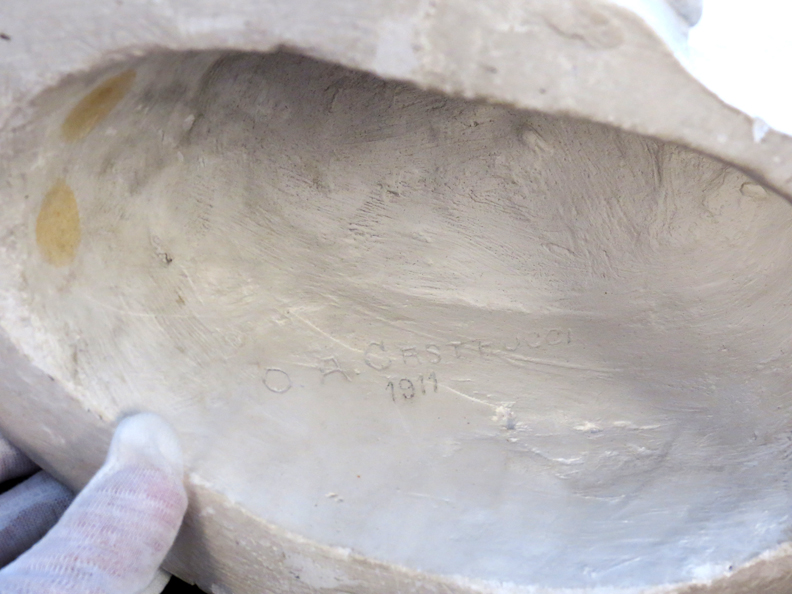Essentially, this part of the liturgical year is for remembering the dead. So what could be more appropriate than a death mask?
 |
| The 'Unknown Death Mask', a.k.a. the Archives' creepiest artifact. Artifacts Special Collection, AF.107 |
Our own plaster piece was in desperate need of identification. It was described as 'unknown death mask' in our artifacts catalogue. For the purposes of this blog, we wanted to cast some light on the issue (weak pun intended).
Handling the mask gingerly with cotton gloves, we searched for any identifying marks:
 |
| The maker's signature and date of creation: "O.A. Castrucci 1911" |
Out of biological necessity, masks are created close to the date of death, so we searched our database to see who had died in 1911. Amazingly, two Archbishops of Toronto - Fergus McEvay and his predecessor, Denis O'Connor, C.S.B. - died within weeks of each other in the middle of that year.
Both of these bishops were robust in life and similar-looking, as evidenced by their portraits below. Both men died after suffering from disease, which would account for the gauntness of the face in the death mask.
 |
| Portraits of Archbishops of Toronto, Denis O'Connor C.S.B (left) and Fergus McEvay (right) |
 |
| Somewhat disturbing are the eyelashes and eyebrow hairs embedded in the plaster. |
Halloween mystery solved!
More on death masks: some of the most famous death masks include those of Dante Alighieri, Mary Queen of Scots, and Napoleon Bonaparte. The Laurence Hutton Collection of Life and Death Masks at Princeton University Library contains over a hundred likenesses of English and American literary and political figures.
_______________________________
*Klempan, Brabara. "Early Manufacture of Artists’ Materials in Canada: A History of Canadian Art Laboratory," Journal of the Canadian Association for Conservation, 37 (2012): p.50.
Zucchi, John E. Italians in Toronto: Development of a National Identity, 1875-1935 (Montreal: McGill-Queen's University Press, 1990), p.148.












.jpg)
.jpg)